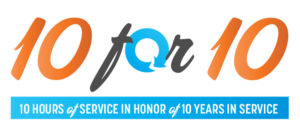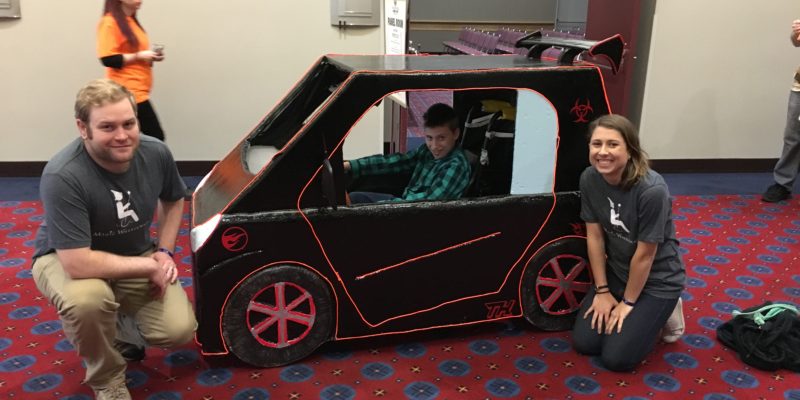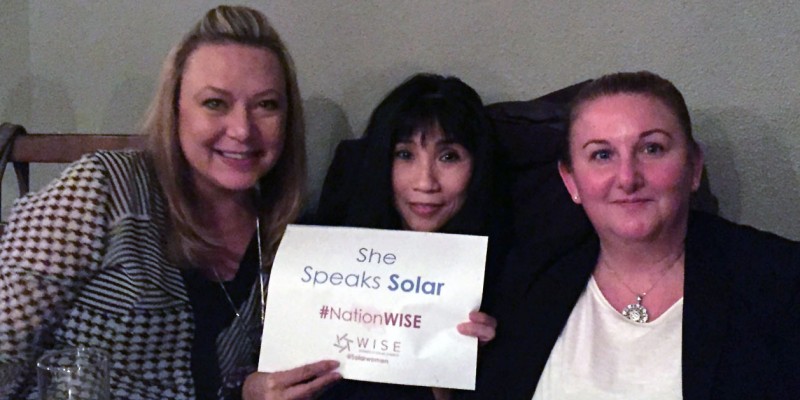 In honor of RRC’s 10 year anniversary, the company is offering a year-long volunteering program called “10 for 10”. The program gives employees, like the build team from Tualatin, the opportunity to volunteer 10 hours of service in honor of our 10 years in service.
The organization and RRC’s build group were featured in the local Tualatin paper, Tualatin Life. Read the feature here.
To learn more about Magic Wheelchair, visit their website.
Congratulations to everyone that participated!
In honor of RRC’s 10 year anniversary, the company is offering a year-long volunteering program called “10 for 10”. The program gives employees, like the build team from Tualatin, the opportunity to volunteer 10 hours of service in honor of our 10 years in service.
The organization and RRC’s build group were featured in the local Tualatin paper, Tualatin Life. Read the feature here.
To learn more about Magic Wheelchair, visit their website.
Congratulations to everyone that participated!

Engineering Magic for a Child
“We all have a desire to see children succeed,” explains Logan Russell, RRC Electrical Design Engineer, “and because we are making this for a child with disabilities, it is especially rewarding to provide them an opportunity they would not otherwise have, with something unique built just for them.”
Four of our Tualatin, OR employees, Logan Russell, Nicole Wehner, John Moffit, and Tanya Johnston are donating their time and imagination to Magic Wheelchair, a nonprofit organization that organizes volunteers to transform the wheelchair of a child. The recipient is able to choose which character or theme they like and the build team sets to work!
Team RRC will be designing for Jesse, 12 years old, who wanted his chair transformed into a spy smart car! Jesse unveiled his new wheels February 18, 2017 at Wizard World Comic Con in Portland, OR. The spy car is equipped with features even James Bond would envy including electrical components and a working radio.
“Our company encourages and supports us to do volunteer work, especially in our own community,” adds Logan. “Volunteering with Magic Wheelchair provides a great way for us to help children using our skills in electrical engineering.” In honor of RRC’s 10 year anniversary, the company is offering a year-long volunteering program called “10 for 10”. The program gives employees, like the build team from Tualatin, the opportunity to volunteer 10 hours of service in honor of our 10 years in service.
The organization and RRC’s build group were featured in the local Tualatin paper, Tualatin Life. Read the feature here.
To learn more about Magic Wheelchair, visit their website.
Congratulations to everyone that participated!
In honor of RRC’s 10 year anniversary, the company is offering a year-long volunteering program called “10 for 10”. The program gives employees, like the build team from Tualatin, the opportunity to volunteer 10 hours of service in honor of our 10 years in service.
The organization and RRC’s build group were featured in the local Tualatin paper, Tualatin Life. Read the feature here.
To learn more about Magic Wheelchair, visit their website.
Congratulations to everyone that participated!
 In honor of RRC’s 10 year anniversary, the company is offering a year-long volunteering program called “10 for 10”. The program gives employees, like the build team from Tualatin, the opportunity to volunteer 10 hours of service in honor of our 10 years in service.
The organization and RRC’s build group were featured in the local Tualatin paper, Tualatin Life. Read the feature here.
To learn more about Magic Wheelchair, visit their website.
Congratulations to everyone that participated!
In honor of RRC’s 10 year anniversary, the company is offering a year-long volunteering program called “10 for 10”. The program gives employees, like the build team from Tualatin, the opportunity to volunteer 10 hours of service in honor of our 10 years in service.
The organization and RRC’s build group were featured in the local Tualatin paper, Tualatin Life. Read the feature here.
To learn more about Magic Wheelchair, visit their website.
Congratulations to everyone that participated!





